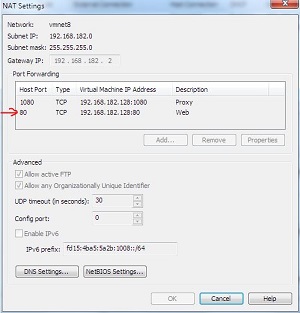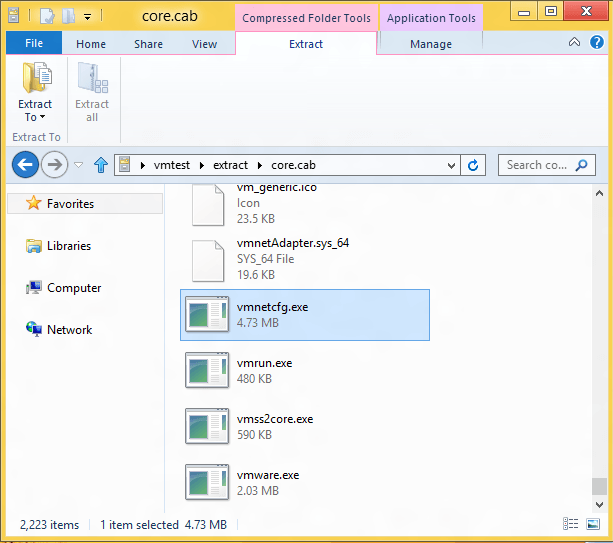


The vmnetcfg.exe file is in it, so just extract it out of that archive, like you normally would.
#VMNETCFG EXE DOWNLOAD ARCHIVE#
Browse to the extract directory and search for an archive called 'network'. Obtain it as follows: extract the installer file (for 4.0.4 VMware-player-4.0.4-744019.exe), from a command prompt C: Temp vmware>VMware-player-4.0.4-744019.exe /e extract this has just extracted the installer file in a directory called 'extract'. To change this (as it is set to automatic per default), you will need to obtain a file called 'vmnetcfg.exe'.įor some reason, this file is NOT installed when installing vmplayer. The problem with connectivity not working in bridged mode is that the vmnet0 interface was binding to the wrong host interface.
#VMNETCFG EXE DOWNLOAD DOWNLOAD#
We need to download Workstation 11 for Player 7. Rename _vmnetcfglib.dll tp vmnetcfg.dll and copy vmnetcfg.exe ane vmnetcfg.dll to Player. Contrary to vmnet1 (used for host-only), and vmnet8 (used for NAT), vmnet0 is not displayed when going into your host's control panel. Under the hood, vmware player uses vmnet0 as the virtual interface that bind to an interface on your host machine. The problem was that my host machine has multiple network interfaces as most machines do loopback, wireless, and ethernet, if not more). As always the solution was simple, but the research extensive. I was building the virtual machine using a bridged network and for the life of me was unable to ping it from anywhere within my network. Typically “C:Program FilesVMwareVMware Player”.Not necessarily a Cisco post, but I came across a connectivity issue when building Cisco Unified Presence server vritual machine. Open “network.cab” and copy vmnetcfg.exe to your installation folder, extractĪll contents will be extracted to “extract” folder.Ģ. The vmnetcfg.exe is included in the installer, but won’t be installed.ġ. I found discussion and the answer in a forum post: Of course, after my low-tech solution I went looking for better options… Turns out I’m not the first one to notice that vmnetcfg went missing. Client got an IP and I then re-enabled the Hamachi adapter. I simply disabled the Hamachi adapter and then booted the VMware client. I ended up fixing this in a bit more of a low-tech fashion. I poked around a bit but it wasn’t there and I didn’t see anything that looked like a replacement. That’s when I hit the next snag: the new version of VMware Player doesn’t include the vmnetcfg network configuration that I’ve always used to fix this in the past. VMware Player seems to like to grab my Hamachi “personal VPN” network adapters instead of the local Ethernet one – it will never get an IP from the Hamachi network! Seemed that the client couldn’t get an IP address to get on the network. I pointed it to my trusty Xubuntu “security” virtual machine and booted up. Wanted to check out the latest version and get a first hand look at the new features. I updated VMware Player to the latest version (3.0) on my home machine last night.


 0 kommentar(er)
0 kommentar(er)
